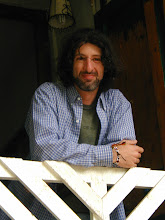"Oh fortuna
Cambiante como la luna
Ahora llenandote
Mañana menguandote."
 Viejos poemas de monjes rebeldes, borrachos y mujeriegos, musicalizados por Carl Orff, electrificados por Ray Manzarek, coordinados por Philip Glass, orquestados por Michael Riesman e ilustrados por Hieronymus Beach... Es la rueda de la fortuna en su girar perpetuo...
Viejos poemas de monjes rebeldes, borrachos y mujeriegos, musicalizados por Carl Orff, electrificados por Ray Manzarek, coordinados por Philip Glass, orquestados por Michael Riesman e ilustrados por Hieronymus Beach... Es la rueda de la fortuna en su girar perpetuo... MF: Carmina Burana
Destiny: Ruler Of The World
1 The Wheel Of Fortune (O Fortuna) 3:06
2 The Wounds Of Fate (Fortune Plango) 3:44
Springtime
3 The Face Of Spring (Veris Leta Facies) 4:16
4 Sunrise (Omnia Sol Temperat) 2:14
5 Welcome (Ecce Gratum) 2:46
6 The Dance (Tanz) 2:25
7 Sweetest Boy (Dulcissime) 0:34
8 If The Whole World Was Mine (Were Diu Werlt) 0:50
In The Tavern
9 Boiling Rage (Estuans Interius) 3:14
10 The Roasted Swan (Olim Lacus) 2:11
11 In The Tavern (In Taberna) 2:33
The Court Of Love
12 Love Flies Everywhere (Amor Volat) 2:08
13 A Young Girl (Stetit Puella) 2:54
14 Come, My Beauty (Veni Veni Venias) 2:36
15 The Lovers (Blanziflor Et Helena) 1:16
Destiny: Ruler Of The World
16 The Wheel Of Fortune (O Fortuna) 3:09
Creditos
Composición - Carl Orff
Arreglos - Ray Manzarek
Orquestación, Conduccion - Michael Riesman
Diseño de Arte - Lynn Robb
Ilustración - Hieronymus Beach
Bajo - Doug Hodges
Batería - Larry Anderson
Guitar - Ted Hall
Piano, Organo, Teclados - Ray Manzarek
Saxophone, Flute - Jack Kripl
Synthesizer - Adam Holzman , Michael Riesman
Mezcla - Joe Chiccarelli
Ingenieros - Clay Rose , Gene Wooley
Productor - Kurt Munkacsi , Philip Glass
Grabación - John Beverly Jones
Notas (liner notes)
In 1803 a scroll of medieval poems was discovered in the German province of Bavaria among the debris of the secularized monastery of Benedikt-Beuren ("BURANA").
These lyrics, written primarily in Latin, were determined to be the work of renegade monks and wandering poets of the 13th Century. Their words captured a lost world of rebels and dropouts of the medieval clergy; hard lovers, drinkers, on the move, celebrating existence rather than living the meditative, celibate, cloistered life of the monastery.
In 1935 German composer Carl Orff re-discovered the poems. Impressed with their meaning and rythm he composed a cantata utilizing the centuries old verses. He transformed the writings into invocations and profane chants accompanied by numerous instruments and magical representations.
These songs ("CARMINA") were devided into three primary sections: Springtime - the life force renewed; In the Tavern - drinking and gambling; The Court of Love - passion, sensuality. The sections are pervaded and framed by The Wheel of Fortune ("O Fortuna") perpetually turning, perpetually governing the course of man's existance.
In 1983 Ray Manzarek, long attracted to the spiritual power of Carmina Burana, chose to interpret the piece in a contemporary framework. This presentation intends to create enchanted pictures; to conjure up the ecstasy expressed by the lyrics, an enhanced intense feeling for life akin to the passions and revelry of the wandering poets of so long ago.












No hay comentarios:
Publicar un comentario